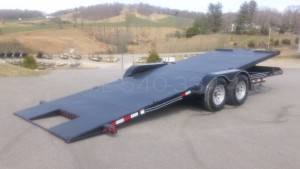How to Winterize an RV in 7 Easy Steps
In 2017 in the United States, about 10 million households owned an RV.
If you’re one of those millions of households, you’re probably wondering what you’re going to do for winter to protect your RV.
Thankfully, there are plenty of things to know about how to winterize an RV. Make sure you keep reading to find out!
1. Drain Your Water and Water Heater Lines
One of the first things you should do is make sure you drain your water and water heater lines.
To do this, you’ll have to turn it all off and let it cool down so that it doesn’t have a lot of pressure in it. After that, you can take the drain plug out and open the pressure relief valve.
Once you do this, the water will start draining out.
As for the water heater, don’t drain it if it’s hot. You have to wait for it to cool down and for the pressure to go down.
2. Clean It
You may not think about cleaning the RV, but it’s also one of the most important helpful things that you could do.
Make sure you clean it inside and out. Get rid of any food products or anything that could attract bugs or rodents while you’re not using it. You may also want to clean the fridge out and make sure that it’s securely closed.
You should also go through your RV and take everything you’ll need out. This includes taking out all the clothes or dishes you’ll need. While you’re at it, it may be a good time to do a “spring cleaning” and organize everything so that it’s ready to go when you come back.
Remove any sheets, curtains, or towels so that you don’t come back to a bunch of bed bugs when winter is over.
While you’re cleaning and organizing everything, make sure you’re also inspecting for any issues, like cracks or broken appliances.
3. Use Antifreeze
Yes, you can use antifreeze for your RV, and it will help your RV get through the winter.
Once you’ve drained the water tanks with one of the low-point drains, you can start pumping antifreeze through the water system.
Before you do that, make sure you check to see if your RV has a water heater bypass in it. If you do, then you can turn on the bypass valve.
4. Disconnect the Water Pump
Once you’ve disconnected the water pump, you can also disconnect the waterline. You’ll need a little bit of hose in order to do this, so make sure you find one that fits perfectly around the intake.
If you’re going to pump antifreeze in this way, it’ll help save you money, and it won’t put the taste of chemicals directly into the water when you come back.
To avoid that, get a plastic line or hose and put it into a jug of anti-freeze. Turn on the water pump, and it will draw the anti-freeze right up from the container instead of you having to pour it into the RV.
To make sure that it’s working, turn all of your faucets on and check to see if there is a pink color coming out of them. If you’re going to do it this way, you’ll probably need between two or three gallons of pink anti-freeze.
5. Disconnect all the Electronics
Next, make sure that none of the electronics are connected.
Disconnect all your electronics like your coffee maker, water pump, TV, stereos, chargers, or anything else that is plugged into an outlet.
You may also want to disconnect any batteries that are in your RV. During the cold winter months, they can start to lose their life if you leave them in freezing temperatures, so take them out and put them somewhere warm.
6. Use Compressed Air
Next, you can also use compressed air to help winterize your RV. This might be one of the easiest ways to clean it, and all you need is an air compressor and a plug to help blow everything out.
This is used normally to help get all the water out of your lines, but sometimes it doesn’t blow all of the water out, so you have to be careful.
Once you’re done pushing the compressed air through all of the lines, that’s when you can start to use the antifreeze.
7. Protect it From the Weather
You’ll also have to protect the outside of your RV so that the snow and cold don’t start to damage the exterior.
Try and find somewhere to store it, whether it’s in an enclosed shelter or under some type of fabric cover. Many places make them specifically to keep them safe during the winter months.
If you’re not sure which one to get, you can always ask your RV manufacturer what they would recommend for your RV.
Discover More Ways on How to Winterize an RV
These are only a few things to consider when you want to winterize an RV, but there are many more steps to take.
After you clean all of your belongings out of your RV to winterize it, you may need somewhere else to store it. Thankfully, we have plenty of trailers to help you tow it all!
We are Here to Help
The Pro-line Trailers service team is standing by to help you winterize your RV and protect your investment, make sure that you contact us today! 540-334-4182 to schedule your RV or travel trailer winterization today. We provide winterization servies to the Roanoke Valley and surrounding areas.





